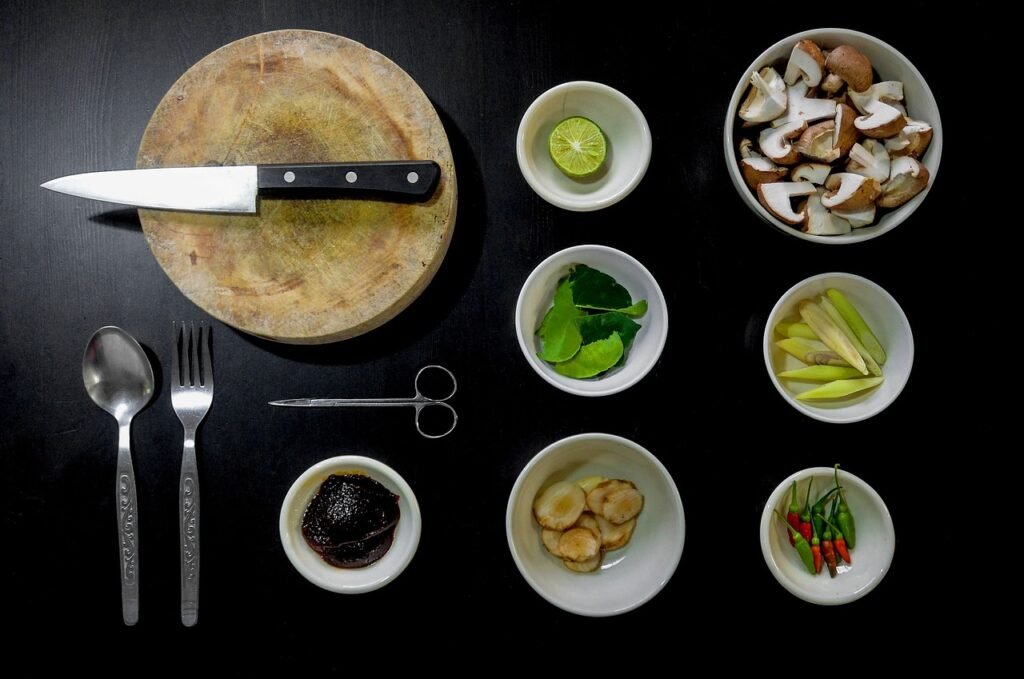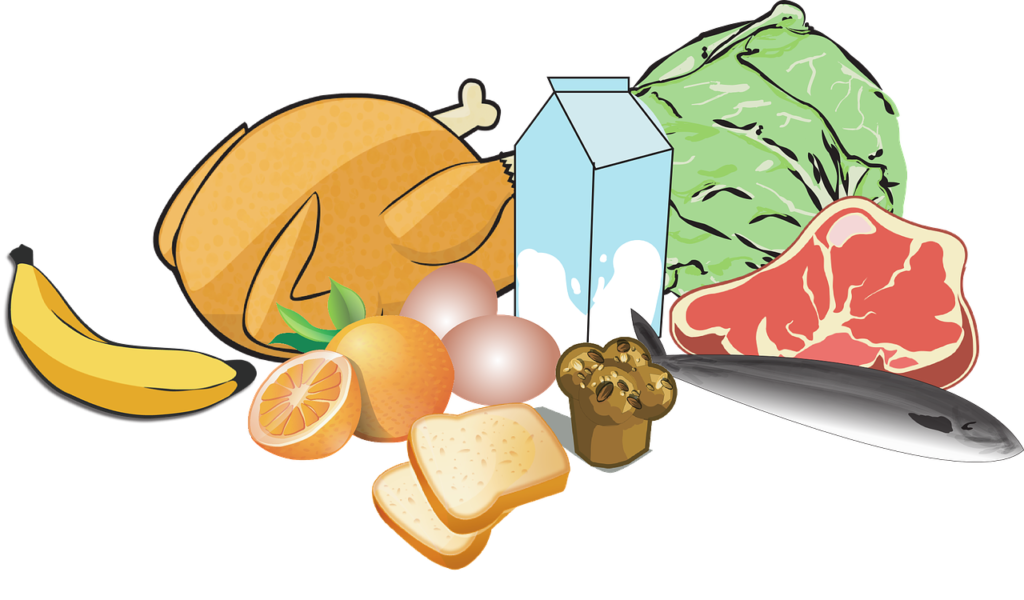To know how to prevent foodborne illness in your kitchen is a must in the world of food safety.
In our previous post, we explored the Big 6 foodborne illnesses and their severe impact on health.
We also mentioned that foodborne illnesses cause approximately 48 million illnesses, 128,000 hospitalizations, and 3,000 deaths annually in the United States alone. As CDC says
Building on that foundation, this article focuses on a crucial aspect: how to prevent foodborne illness in your kitchen.
By implementing simple but effective practices, you can significantly reduce the risk of foodborne illnesses, keeping your meals safe and your family healthy.
At the end of this article, we will mention the Benefits of Avoiding Foodborne Illnesses
But for now, we will tell you the top 10 Tips to Prevent Foodborne Illness
Top 10 Tips to Prevent Foodborne Illness
1. Proper Handwashing

In another previous post, we mentioned the ideal step sequence to wash your hands efficiently.
Wash your hands with soap and water for at least 20 seconds before and after handling food.
This will removes harmful bacteria and viruses that can transfer to food and protect you from having these pathogens inside your digestive system.
Make sure to keep a handwashing station easily accessible in the kitchen.
And ensure everyone in your household or business facility follows this practice.
2. Safe Food Handling
It is always recommended to use separate cutting boards and utensils for raw meat, poultry, seafood, and vegetables.
We can ensure this by Color-coding the used cutting boards (e.g., red for meat, green for vegetables) to avoid confusion and reinforce this habit.
Also, food handlers need to follow the best practices while dealing with foods.
Here we mean taking care about their personal hygiene and using the required PPE.
By doing this, they can prevent cross-contamination, which can spread harmful pathogens from raw to ready-to-eat foods.

3. Cooking to Safe Temperatures
Use a food thermometer to ensure that meat, poultry, and eggs are cooked to safe internal temperatures.
This will Kill harmful bacteria that may be present in raw or undercooked foods and prevent being in the TDZ.
It is very crucial to make sure that your staff are aware about the cooking temperature chart in your kitchen. You can post this chart inside the kitchen for quick reference.
4. Proper Food Storage
Always make sure that the storage conditions are suitable for your food material.
You need to be aware of which storage practice could cause cross-contamination and avoid them. Some of these practices are overcrowding your refrigerators and storing raw food with prepared ones.
Always follow the FIFO (First In First Out) rule to avoid having expired foods.
In rare cases, long-term health issues like Guillain-Barré syndrome can occur.
5. Avoid the Temperature Danger Zone
We have a separate post describing the TDZ in details, if you have time you can check it.
But in brief, it is the temperature range at which bacteria can multiply and grow faster.
It ranges from (40 – 140 ° F).
Cooking food for the safe temperature, proper cooling and thawing process and having temperature monitoring devices can help you to avoid TDZ.
6. Cleaning and Sanitizing Surfaces

Regularly clean and sanitize kitchen countertops, cutting boards, and utensils.
Proper sanitation eliminates potential contaminants from surfaces that come into contact with food.
In this post we mentioned the characteristics of a good sanitizer. it need to be effective, anti-microbial, and skin friendly.
Also this tip was mentioned as one of the most important tips to prevent poor food safety in this post.
7. Proper Use of Kitchen Equipment
Ensure all kitchen tools and equipment are in good condition and clean before use and even replace them if they are damaged.
This will Prevent contamination from damaged or dirty equipment.
Also, other equipment like refrigerators and ovens need to be operated properly. So, make sure to follow their maintenance programs.
And make sure to keep your temperature monitoring tools always calibrated and working properly.
8. Mindful Thawing of Frozen Foods

Never thaw frozen foods at room temperature, the best way is to thaw them in the refrigerator, cold water, or microwave.
If you are putting them in the room temperature, they will be exposed to fall into the TDZ and bacteria will grow faster.
So you need to plan ahead to allow sufficient time for thawing in the refrigerator, which is the safest method.
9. Elevate the competency
Either for your household members or for the crew working inside your organization.
Teach them about proper food safety practices, emphasizing the importance of hygiene and safe food handling.
Always communicate with them to share any new policies or best practices.
Awareness is the best weapon against harm, because awareness will teach them how to prevent not how to fight.
10. Stay Informed About Food Recalls
Regularly check for food recalls and safety alerts to stay updated on potentially contaminated products.
The world of food safety is fall of fresh news, regulations and best practices.
We mentioned above the huge number of food illnesses. Analyzing them will for sure yield new recommendations.
It is not necessary to suffer first then learn, it is wise to learn from other’s experiences.
The Benefits of Avoiding Foodborne Illnesses
Understanding how to prevent foodborne illness goes beyond just following rules—it’s about ensuring the health and safety of everyone who eats in your home.
Here are some key benefits of adopting robust food safety practices:
Health Protection:
By preventing foodborne illnesses, you safeguard your family from potentially severe health issues, including stomach cramps, vomiting, diarrhea.
And also what is worse, these complications may go beyond these minor symptoms to be life-threatening.
Economic Savings:
Reducing the risk of illness means fewer medical expenses and less time off work due to sickness.
This can lead to significant economic savings over time.
Read this post if you want to know what are the impacts of foodborne illness
Peace of Mind:
Knowing that your kitchen practices are safe gives you confidence and peace of mind, allowing you to enjoy your meals without worry.
Community Health:
Practicing good food safety not only protects your household but also contributes to broader public health efforts by reducing the spread of foodborne pathogens.
Good reputation for your business.
If you are a food business owner, you will gain many good benefits of having positive feed backs from your clients who are not suffering from your food.
Conclusion
Preventing foodborne illness is crucial for safeguarding your health and the health of your loved ones.
By following these top 10 kitchen tips on how to prevent foodborne illness, you can significantly reduce the risk of encountering harmful pathogens and ensure your meals are safe and enjoyable.
Recap of Tips:
- Proper Handwashing: Wash hands thoroughly with soap and water.
- Safe Food Handling: Use separate cutting boards for raw and ready-to-eat foods.
- Cooking to Safe Temperatures: Use a food thermometer to ensure safe internal temperatures.
- Proper Food Storage: Refrigerate perishable foods promptly and maintain correct temperatures.
- Avoiding the Temperature Danger Zone: Keep hot foods hot and cold foods cold.
- Cleaning and Sanitizing Surfaces: Regularly clean and sanitize kitchen surfaces and utensils.
- Proper Use of Kitchen Equipment: Ensure tools and equipment are clean and in good condition.
- Mindful Thawing of Frozen Foods: Thaw foods safely in the refrigerator, cold water, or microwave.
- Educating Household Members: Teach and reinforce proper food safety practices.
- Staying Informed About Food Recalls: Keep updated on food recalls and safety alerts.
And these are not everything, we promise that we will always help to make you updated about whatever related to food safety.
Stay vigilant, stay informed, and stay healthy.



